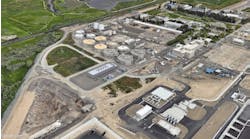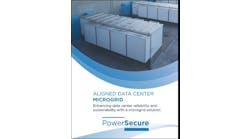Shell Begins Testing Microgrid Performance at its Largest Technology Center
Shell International Exploration & Production has begun operating the new microgrid at its Shell Technology Center Houston (STCH) campus.
The microgrid provides clean, resilient energy for a facility on the 200-acre campus where nearly 2,000 Shell scientists, technologists and engineers work. It is the largest of Shell’s three technology centers. The others are in Amsterdam and Bangalore.
Installed earlier this year, the Shell microgrid incorporates 300-kW of ground mounted solar photovoltaic panels, a 127-MW natural gas reciprocating engine and a 1,050-kWh advanced lithium ion battery and a 250-kW load bank. Electric vehicle charging stations and other battery elements are scheduled to be added to the site in April and May and to be fully operational in June.
Black & Veatch designed, procured and built the microgrid. The company also monitors its performance remotely to ensure the warranty is met and issues prompts to perform preventive maintenance.
“By serving as a platform for hands-on research, the microgrid allows Shell to analyze different scenarios in renewable energy systems integration, providing an elevated level of technology assurance and insight,” said Dustin Rogge, Black & Veatch’s project manager.
Shell’s Houston research center is designed to study the next generation of clean power and distributed energy technologies. The Shell microgrid is a working test lab that enables Shell to explore advances in renewable energy by helping researchers better understand the challenges of integrating the components to provide safe, seamless, reliable power to consumers.
Shell said the ability to flex the system will allow it to see how the equipment performs in different scenarios, which will aid the understanding of how to best deploy renewable energy resources. The facility has an automated load bank that can simulate different electrical loads in order to experiment with how much power to generate or absorb at any given time.
“The microgrid is already generating value for STCH by providing resilient, renewable power for part of our campus,” said Jon La Follett, energy system integration and storage program lead in Shell’s new energies research and technology department. “And by exporting power to the local grid, we are generating economic benefit.”
Shell is looking at the technology for deployment in urban areas, as well as in remote areas around the world from Asia to Africa.







